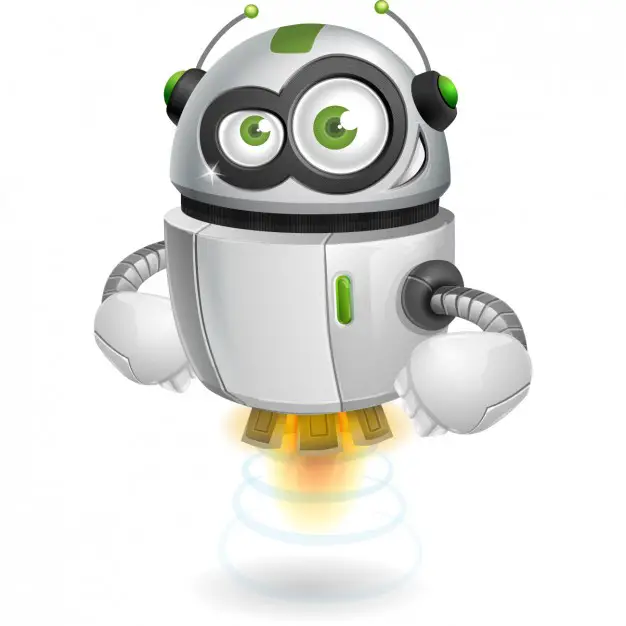This article justifies the urgent need to change the curriculum in the Philippines given the rapid pace of development in artificial intelligence and robotics in education. Read on to appreciate what robots can do in education and why there is a need to change the curriculum.
In 2017, my student in the Diploma in Teaching Course in Thailand gave me the idea how fast the development of Artificial Intelligence (AI) in the world, particularly in the field of education. “Robots are coming our way! They are already here and might replace us – teachers in a very short period of time,” he said.
In Thailand, the use of artificial intelligence and robotics in education has been intensified as it pushes forward to digital economy era or the so-called, “The Age of Automation.” Yes, almost everything can be done with the use of robotics and artificial intelligence (AI)!
With the rapid expansion of technology and digital applications, we have now the robotic nurses and surgeons. We also have automated vehicles or driverless cars. There is also a translation app and a device that will automatically translate your utterances and be able to converse with foreigners in real time.
If we have robotic nurses, surgeons and translators, can we also have robotic teachers? What can AI and robotics do in the field of education?
Artificial Intelligence and Robotics in Education
1. Assessment
With softwares and apps available in the market, you can easily assess the performance of students. The use of Moodle, Edmodo, Google Classroom, and Schoology, among others can help you a lot in assessing students’ performance. Paper and pencil tests can easily be constructed in the Learning Management System. All you have to do is encode the questions, set the correct answer, and upload it. On the other hand, your students receive the test and answer it. Then, their scores will be displayed on their screens and on your screen as the subject teacher.
For written responses like essays, you can easily check and mark their papers even if you have a lot of students. You can also give immediate feedback whether their papers are plagiarized or have errors in grammar, spelling and mechanics.
There are also grammar and vocabulary games that would help determine your students’ level of proficiency. Proficiency tests such as IELTS, TOEFL, and TOEIC are in digital form. You can do a test preparation online or even take the actual test online in listening, speaking, reading and writing.
2. Personalization and Differentiation
In many Asian countries, large classes are evident. With 40 – 60 students, it is hard to treat students one by one and give them immediate feedback.
Nowadays, there are robots that can read the facial expressions of students whether they find the lessons difficult or not. Robots can also distinguish which students must be given extra lessons or a simplified explanation of the lesson.
You can also check class attendance through QR codes. If a student does not belong to your class, the app can give you information about the student’s classroom, subject and teacher. A notification is also sent to the parents if their children are present or not. All students’ records are in the dashboard so that the advisers can easily monitor their students’ over-all performance.
Likewise, parents can also keep track the progress of their children. There is a learning management system than can let parents monitor the performance of their children.
Thus, academic performance can easily be traced, monitored and evaluated by the teachers, students, and parents as well. Students are treated individually and able to excel in their academic pursuits.
3. Teaching and Learning
Robots are being developed as teaching assistants or real teachers. They can now deliver lectures like humans do! They can also give a lot of information and answer questions from the students.
In some cases, robots are used as instructional materials. For example, robotics are used in Science, Technology, Engineering, and Mathematics (STEM) classes to explain the concepts and processes involved.

In a university that offers Technopreneurship Curriculum, both teachers and students can make their own robots, apps, or devices and sell them to interested individuals or companies. This kind of curriculum is getting popular in Korea and India, and hopefully in the Philippines.
Why Change the Curriculum
Anticipating automation and artificial intelligence in education, the curriculum must be changed. There is a need to train and retrain people to use new technologies that would require for new skills and competencies.
For example, schools around the world are now integrating the 21st Century skills such as communication, critical thinking, creativity, and collaboration (4Cs) in their curricular programs. In this way, education is able to make people “humans.”
According to Jack Ma, “We can’t compete with robots in terms of knowledge. Teach people with soft skills such as teamwork, independent thinking, believing, and caring for others. These are the important skills that can distinguish us from robots”.
The kind of curriculum in the Philippines must change from content-driven into technology-driven curriculum coupled with skills and experiences. This means that teachers must use technology (robots and AI) to facilitate the lesson; teach soft skills to students, and provide the students with the experiences in which they can create and innovate ideas through problem solving, research and development.
Now, let’s go back to the question raised by my student. Can robots replace us? Perhaps, they can take our jobs in the future. But are we going to allow this?
If our answer is “No”, then we should use robots only as our tools to make things faster and easier for us. We need to equip ourselves with skills necessary to have a meaningful life – a kind of life that is stress-free and where we have more time to spend with our families and friends.
References:
1. Leesa-nguansuk, Suchit. (June 5, 2017). AI at 4.0 forefront. Retrieved from https://www.bangkokpost.com/tech/local-news/1262763/ai-at-4-0-forefront
2. Lynch, Matthew. (May, 5, 2018). Seven roles for artificial intelligence in education. Retrieved from https://www.thetechedvocate.org/7-roles-for-artificial-intelligence-in-education/
3. Lynch, Matthew. (March 26, 2017). Five reasons to teach robotics in schools. Retrieved from https://www.thetechedvocate.org/five-reasons-to-teach-robotics-in-schools/
4. Manns, Mark. (December 11, 2017). Artificial intelligence: opportunities, threats and future learning. Retrieved from https://bangkok.unesco.org/content/artificial-intelligence-opportunities-threats-and-future-learning
5. Marr, Bernard. (July 25, 2018). How is AI used in education – real world examples of today and a peek into the future. Retrieved from https://www.forbes.com/sites/bernardmarr/2018/07/25/how-is-ai-used-in-education-real-world-examples-of-today-and-a-peek-into-the-future/#62ae6a62586e
6. Utermohlen, Karl. (April 12, 2018). Four ways AI is changing the education industry. Retrieved from https://towardsdatascience.com/4-ways-ai-is-changing-the-education-industry-b473c5d2c706
7. World Economic Forum. (February 1, 2018). The future of education according to Jack Ma, Trudeau, and Malala. Retrieved from https://english.cw.com.tw/article/
[cite]



Good day, ma’am. As I was reading the whole article, I imagined what would our field of education be if AI and robotics are in the curriculum. Yes, this kind of technology would be a great development in education for it will be more convenient for everyone- the students and the teachers. It would bring a new and different opportunity for the country to be competent in the educational development. Also, it is true that our country should change in a technology-driven curriculum with skills and experienes to provide students the knowledge and skills they must acquire as the world is now revolving in technology. As a 21st century student and a future educator, it is crucial for us to adapt the fast-paced global technological development. However, I agree with you that Artificial Intelligence and robotics should only be used to assist the human teachers to make their works faster and easier. Robots will never replace the warmth of a human teacher can give to the students.
Good day Dr. Alvior,
It’s good to know that you are able to publish this kind of Article about AI’s, and on how it justifies the urgent need to change the curriculum in our own country; given the rapid pace of development in artificial intelligence and robotics in education. Moreover, I do appreciate what robots can able to do in education for there are certain things that they could possibly do unlike real teachers; hence, robots should only be developed as teaching assistants but not a replacement of the human educators. Even though Robots has its Artificial intelligence we cannot conclude that, it will be an effective solution to cure ignorance, because after all; real teachers should still matter the most.
Good day Dr. Alvior,
It’s good to know that you are able to publish this kind of Article about AI’s, and on how it justifies the urgent need to change the curriculum in our own country; given the rapid pace of development in artificial intelligence and robotics in education. Moreover, I do appreciate what robots can able to do in education for there are certain things that they could possibly do unlike real teachers; hence, robots should only be developed as teaching assistants but not a replacement of the human educators. Even though Robots has its Artificial intelligence we cannot conclude that, it will be an effective solution to cure ignorance, because after all; real teachers should still matter the most.
Good day, ma’am! Indeed, the world around us is changing, thus education must follow suit. Technologies like artificial intelligence (AI) are of great help in creating global-liked classrooms that will provide new learning opportunities for the students. It could also lessen the workload of teachers, that often exceeds what is reasonable, allowing teachers to have the quality time to spend for. Moreover, I also agree that these AI technologies should only play the role of assistant to teachers because they could never provide empathy and emotions, which are crucial in the learning process. Therefore, robots will never be able to completely replace human teachers.
Good day Ma’am! It’s no secret that AI and robotics can be beneficial for us in so many ways and I agree with the idea of having them in the field of education. AI and robotics can be effective in helping educators to teach but AI and robotics can not replace teachers. Yes, AI and robotics may performed tasks easily and conveniently, but they do not have emotions programmed in them. They can not give the motivations and comforts you needed, but a real educator can.
Artificial intelligence and robots are unquestionably beneficial to humanity. These robots can reduce a teacher’s workload in terms of instructing and checking their work, as well as in other professions such as medical. In fact, it was recently announced on national media in the Philippines that a robotic nurse has been tasked to administering medications to some COVID patients. Furthermore, I must concur with you that AI and robots will never be able to replace instructors. They may be able to perform tasks as they have been programmed, but they will never be able to replace the feelings, emotions, and comfort that a genuine human can provide to their students.
Good day, Ma’am! I truly appreciate how comprehensible the points of the article are, which allowed me to reflect on what the future of education can be. I agree that our curriculum should be upgraded to the standard of the modern world where robots and artificial intelligence (AI) become integral parts of our learning. However, I believe as well that robots and AI cannot completely replace teachers in terms of providing the holistic education the learners truly need, but they will no doubt help greatly in instruction and assessment. With that in mind, there really is a need for both teachers and learners to have the appropriate competencies in using technology which is only possible if our curriculum changes to suit the modern needs. Our country will surely have a hard time tackling these but there is no harm in hoping for a better future, as eventually we can act on that vision and make it happen.
Good morning ma’am!
As I read through your article I visualize what will happen to us- educators if we let robots take over us. On the other hand, it is true that robotics and Artificial Intelligence provide a great help for the academic performance of a student. With technology at it’s peak we should adapt to changes and innovations to our curriculum in order to keep up with it’s development and benefit from it. I enjoyed reading your article because I can easily grasp and understand information.
Good day, ma’am! I had fun reading this article and it made me imagine how the future of education in the Philippines would be. I highly agree that Artificial Intelligence and robotics contribute greatly in the field of education and others. However, as you said, let us only use them as tools to make things easier and faster. I hope many people will understand that despite of the programmed knowledge and skills robots can have, they cannot fully replace human teachers.
Good day, ma’am! I had fun reading this article and it made me imagine how the future of education in the Philippines would be. I highly agree that Artificial Intelligence and robotics contribute greatly in the field of education and others. However, as you said, let us only use them as tools to make things easier and faster. I hope many people will understand that despite of the programmed knowledge and skills robots can have, they cannot fully replace human teachers.
The use of artificial intelligence (AI) and advanced teaching technology would be a major stepping stone for us to develop our overall performance in learning and teaching experience which would gradually increase our educational competency and have a better opportunity to be globally competitive. Also, I believe that we should adapt to the significant changes in technology so that we Filipinos wouldn’t be left behind by other developing countries.
Good day, Ma’am! I shall agree with you. It is really undeniable that the use of Artificial Intelligence (AI) and robotics contributes a lot for the betterment of one’s academic performance. I must say that I was impressed when I read your article, I am familiar with the changes and help that artificial intellegence can provide but your article gave me more information about what Artificial Intellegence and robotics can further cater in terms of academic setting. I do agree that we must change our curriculum very soon to keep up with the modernization of technology and so everyone can adjust right away and get themselves familiar of what Artificial Intellegence and Robotics can offer.
Good afternoon, Dr. Alvior.
As I have read this article, I agree on some terms: robots and artificial intelligence are beginning to integrate in our lives, assisting us in some fields such as nursing and education. However, I firmly believe that robots and artificial intelligence shall be used only as an aide for teachers in order to ease their work in schools rather than totally replacing them. Although robots could detect human’s feelings or thoughts, it only sticks to the program installed on its system. Hence, there might be misinterpretations or differences between robots’ and human’s views. This also applies on Artificial Intelligence (AI).
Let me clarify that I am not against robotics and AI because they are really with us right now, and they are a great help. But may I ask on what will be their contributions to education with considerations to humans’ role in education-learning process?
Thanks for the response. Good day!
Good afternoon, Dr. Alvior.
As I have read this article, I agree on some terms: robots and artificial intelligence are beginning to integrate in our lives, assisting us in some fields such as nursing and education. However, I firmly believe that robots and artificial intelligence shall be used only as an aide for teachers in order to ease their work in schools rather than totally replacing them. Although robots could detect human’s feelings or thoughts, it only sticks to the program installed on its system. Hence, there might be misinterpretations or differences between robots’ and human’s views. This also applies on Artificial Intelligence (AI).
Let me clarify that I am not against robotics and AI because they are really with us right now, and they are a great help. But may I ask on what will be their contributions to education with considerations to humans’ role in education-learning process?
Thanks for the response. Good day!
Good day, Ma’am! I shall agree with you. It is really undeniable that the use of Artificial Intelligence (AI) and robotics contributes a lot for the betterment of one’s academic performance. I must say that I was impressed when I read your article, I am familiar with the changes and help that artificial intellegence can provide but your article gave me more information about what Artificial Intellegence and robotics can further cater in terms of academic setting. I do agree that we must change our curriculum very soon to keep up with the modernization of technology and so everyone can adjust right away and get themselves familiar of what Artificial Intellegence and Robotics can offer.
Hello, Sir Draven. Yes, we must. We only need budget and expertise for that.